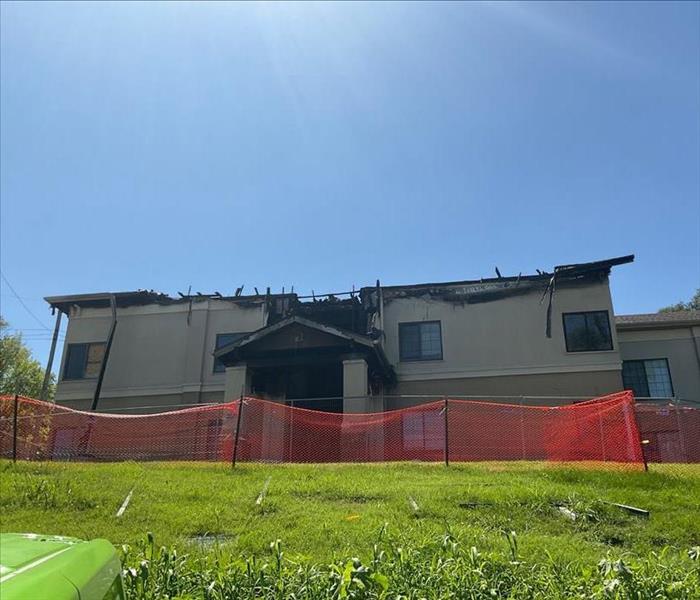A Guide to Navigating Fire Safety Codes and Regulations
12/19/2023 (Permalink)
 Fire safety codes and regulations are in place to protect you, your loved ones, and your property from the devastating effects of fires.
Fire safety codes and regulations are in place to protect you, your loved ones, and your property from the devastating effects of fires.
Fire safety is a critical aspect of home and business maintenance, and understanding the fire safety codes and regulations is crucial for protecting lives and property. In this blog, we'll provide a comprehensive overview of fire safety codes and regulations, covering what they are, why they matter, and how to ensure compliance.
Why Fire Safety Codes and Regulations Matter
Fire safety codes and regulations are in place to protect you, your loved ones, and your property from the devastating effects of fires. These standards are designed to minimize the risk of fires, facilitate safe evacuation, and ensure that buildings and facilities are constructed and maintained to withstand fire hazards. Here are some reasons why they are so crucial:
- Life Safety
Fire codes prioritize the safety of occupants within a structure. They provide guidelines for the installation of fire alarms, sprinklers, and emergency exits to ensure that people can escape safely in the event of a fire.
- Property Protection
Compliance with fire safety codes reduces the risk of property damage. Proper fire-resistant materials and systems can slow down the spread of a fire, minimizing loss.
- Legal Obligations
Ignoring fire safety codes can lead to legal consequences, including fines and penalties. Knowing and following these codes is essential for compliance.
Understanding Fire Safety Codes
The NFPA is a primary source of fire safety codes. They publish the National Fire Codes, which cover a wide range of topics, from building design and construction to fire prevention, detection, and suppression. Familiarize yourself with NFPA 1 (Fire Code) and NFPA 101 (Life Safety Code), as these are commonly adopted by many jurisdictions.
Fire codes may also vary from state to state and even within municipalities. It's essential to research and understand the specific fire codes applicable in your area. Local fire departments, building departments, or municipal websites are excellent resources for this information.
Different types of buildings have unique requirements. Residential, commercial, and industrial structures will have distinct fire safety code considerations. Ensure you are aware of the codes that pertain to your specific building type.
Ensuring Compliance
Compliance is key to ensure safety. Achieving and maintaining compliance with fire safety codes and regulations involves a multifaceted approach, including:
- Regular Inspections
Regular fire safety inspections are essential to maintaining compliance. Inspectors can help identify potential fire hazards and provide guidance on how to address them.
- Fire Safety Equipment
Make sure that your building is equipped with the necessary fire safety equipment, including fire extinguishers, smoke detectors, sprinkler systems, and emergency lighting. Regularly test and maintain these systems to ensure they function correctly.
- Evacuation Plans
Develop and post clear evacuation plans, ensuring that all occupants know the escape routes and assembly areas. Conduct drills to practice emergency procedures.
- Fire-Resistant Materials
Utilize fire-resistant building materials where required. This includes fire-resistant walls, doors, and roofing materials.
- Training and Education
Provide fire safety training for occupants and staff, teaching them how to respond to fire emergencies. Regularly review and update this training to keep everyone informed.
Fire safety codes and regulations are more than just rules and guidelines; they are essential tools for protecting lives and property. Compliance is not only a legal obligation but a moral one. Make it a priority to understand and follow the relevant codes and regulations in your area, and regularly review and update your fire safety measures. By doing so, you'll contribute to a safer and more resilient community.





 24/7 Emergency Service
24/7 Emergency Service